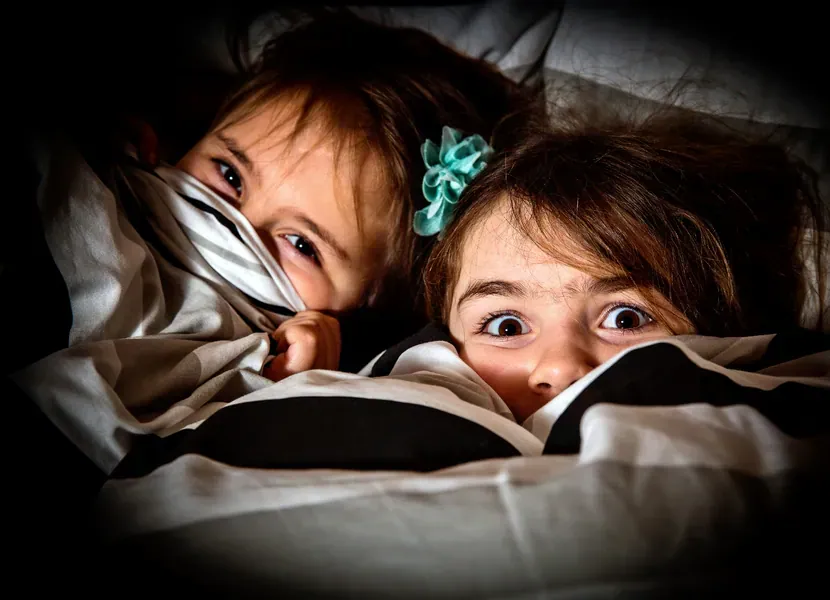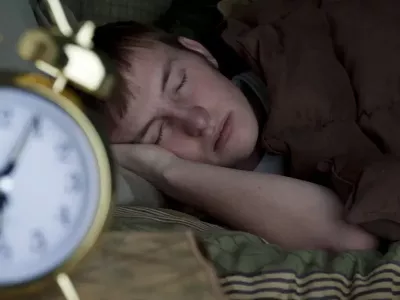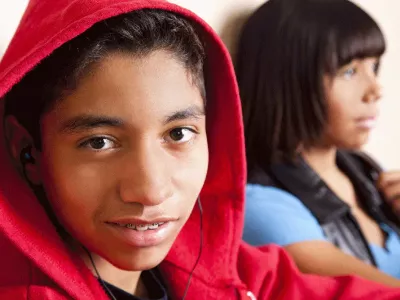Spiders, the dark and thunder: Not so scary once you get to know them

When you’re only small, the world can seem like a frightening place at times. Childhood fears can range from the understandable (getting lost, getting hurt) to the seemingly odd: the toilet, the doorbell, a particular book or toy – you name it, kids can be scared of it!
Most childhood fears are common, fairly mild and will pass as your child grows and learns more about the world around them. Some fears are healthy, and help to keep us safe. We don’t really want our children running onto the road or putting their hands in the fire. However, there are some kids, and adults, who develop persistent fears or phobias. These can be quite debilitating as they can interfere with everyday activities.
So, as a parent, are there ways you can tell if this is just a normal fear for a child of this age or if you may need to take more specific action? One way is to take a step back and try to tune in to whether or not your child’s reaction is getting better or worse over time.
GETTING USED TO NEW THINGS
So, for example, the first time your child encounters a boisterous puppy, he or she might cry, look scared, or ask to be picked up. This is understandable, because the child isn’t familiar with the skills and behaviours that go along with having a puppy and what it’s all about. However, if it’s your dog, or perhaps it belongs to a neighbour or relative, the child will quickly become more familiar with the situation. They’ll see how others handle it, they’ll learn more about what to do, and naturally and gradually, they’ll get used to it and it’ll no longer be a problem.
In this way, what was previously new and alarming becomes predictable and the child is comfortable and no longer afraid. Repeated exposure in a supportive environment can allow the child to learn at a gentle pace to deal with the situation rather than avoid it. This is often the best way for a child to overcome a fear.
WHEN FEAR CREATES MORE FEAR
But if the child only encounters a situation rarely and each time they do, they have a frightening experience (and possibly are immediately removed again), they may become even more frightened. They want to avoid that situation again, and you can end up creating a cycle. Before long, the fear is much greater than any actual risk.
You can also have the situation where the parent is having trouble with their own fear. For example, if a child has a parent who themselves suffers from an anxiety disorder or panic attacks, or has a phobia, there’s probably a two-fold process: the genetic aspect and what the child is observing.
This can start right from babyhood. Let’s say a mum or dad is a bit frightened of, (using the same example again), dogs. So this parent is holding the baby when a dog runs up to them in the street and barks loudly. Because they react with fear or shock, the baby learns to attach the emotion of fear to the sound of a dog’s bark.
Sometimes fear can also be associated with particular smells, or places, or even things like certain colours, if they were also part of the fear-inducing situation.
For a child, when a parent is worried or concerned, the obvious thought is, “these are the people who are protecting me, so if they’re worried, then things must be REALLY bad”. This means you have to be mindful of what you say and how you react to things in front of your children. I would say especially be aware of what you see and hear on TV or on the radio and your reaction, because even very young children will observe that. There are lot of things in the news that are designed to produce a fear response, because it makes us watch more!
HERE’S THE GOOD NEWS
The good thing is that just as an adult can, if you like, transmit fear to a child, they can also model coping skills and confidence. For some parents, this can be a case of 'fake it ‘til you make it'! If you’ve got a fear of storms or spiders or something like that, you might be in a situation where you can feel your heart rate going and your emotions rising, but it’s important to make yourself slow down, take some deep calm breaths and tell yourself that you can handle the situation calmly and without showing your fear to your child. If you’re finding this difficult then maybe consider getting some professional help for your own fears.
For example, I treated someone who used to have an awful problem with using a lift, [elevator] but she needed to take her child to medical appointments in multi-storey buildings. With help, she was able to force herself to manage and be calm so that the youngster was able to see there was nothing to be worried or fearful about.
AVOID COMMON TRAPS
But while it’s natural to comfort and reassure your child, and this is healthy up to a point, you can fall into the trap of having your child come to rely on you because they feel powerless or incapable of dealing with their own feelings.
So encourage your child to think of ways they can deal with challenging situations, remind them of fears they’ve been able to overcome, and help them learn useful coping skills such as relaxation techniques. As much as possible you want to build up their own confidence in their ability to handle the situation, rather than relying on you.
I worked with a family where the child had developed great anxiety around things like his clothing not fitting properly, having dirt on his hands, and having his hair not lie down completely flat. He would stroke his head and ask his parents all the time for reassurance that his hair wasn’t sticking up. Because this was happening all the time, while it was natural that his mother would reassure him that he looked fine, it was counterproductive because he became more and more reliant on the adults in his life to manage his emotions for him.
As part of him learning to have mastery over that situation, we gradually got him used to ruffling his hair and leaving it that way, making mud pies and getting dirt on our hands and face and putting our socks on backwards so the heel part was at the top of the foot. We practised until he learned to deal with these situations, and could experience some discomfort without severe anxiety.
GETTING HELP IS EASIER NOW THAN EVER – AND WORTH IT
There’s no doubt that if you think your child has a fear that’s interfering with their everyday life, it’s worth getting some help to deal with that. There are a number of good programmes that have been developed to help children, especially involving cognitive behavioural therapy (CBT) and helping children develop coping strategies and confidence.
This is important to help prevent problems getting worse as they get older, because we know there are links between things like anxiety and Obsessive Compulsive Disorder (OCD), which can be quite difficult to cope with if untreated. If you think your child could benefit from this, look for a clinical psychologist who specialises in evidence-based anxiety treatments for children, and who’ll also involve parents in the treatment.
As the Spanish proverb says, “vivir con miedo es cómo vivir a medias” – living fearfully is only half-living. Overcoming and managing fear means your child will be able to deal with everyday fears now, and as they grow, be able to take on new challenges with confidence.

